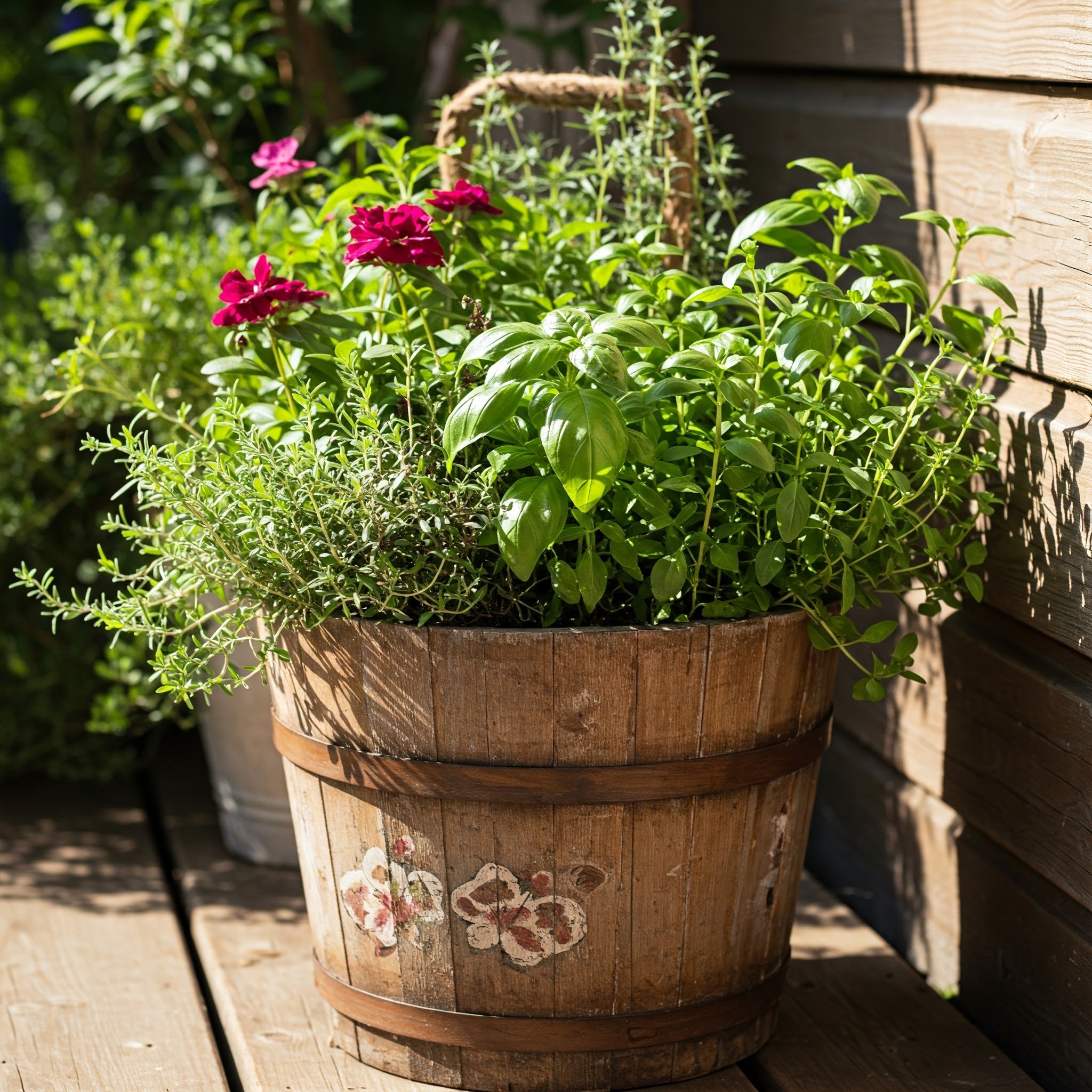How to Grow and Care for New Guinea Impatiens Plant
Discover how to grow and care for New Guinea impatiens with our comprehensive guide. Learn about their ideal conditions, maintenance tips, and common problems to keep your plants thriving and vibrant.
If you’re looking to add a splash of color to your garden or indoor space, look no further than the New Guinea impatiens plant. With their vibrant blooms and lush foliage, these beauties can brighten up any spot, whether it’s a shaded corner of your garden or a sunny windowsill. Known for their versatility and ease of care, New Guinea impatiens are a favorite among gardeners of all levels.
In this guide on How to Grow and Care for New Guinea Impatiens Plant, we’ll dive deep into everything you need to know—from planting and watering to pest management and propagation. So grab your gardening gloves, and let’s get those green thumbs ready!
Understanding New Guinea Impatiens
1. What Are New Guinea Impatiens?
New Guinea impatiens (Impatiens hawkeri) are hybrids that originated from the species native to New Guinea. They boast larger flowers and sturdier stems compared to their traditional impatiens cousins, making them an excellent choice for both garden beds and containers.
2. Why Choose New Guinea Impatiens?
Vibrant Colors: Offering an extensive palette, these flowers are available in a wide range of colors, from bold pinks and purples to rich reds and crisp whites. Their vibrant hues make them a popular choice for adding striking visual appeal to gardens and landscapes.
Disease Resistance: These plants are known for their strong resistance to downy mildew, a common disease that affects other impatiens varieties. This resilience makes them a reliable choice for gardeners, ensuring healthier plants with fewer issues and less maintenance, even in challenging conditions.
Versatile Growing Options: These plants thrive in shady areas but can also tolerate partial sun, offering flexibility in your garden design. Their adaptability makes them a great choice for a variety of planting locations, allowing you to brighten both low-light and moderately sunny spaces.
How to Grow and Care for New Guinea Impatiens Plant
Step 1: Selecting the Right Location
1. Sunlight Requirements
Part Sun to Shade: New Guinea impatiens thrive in environments that offer bright, indirect light. They prefer part sun but can also tolerate full shade, making them perfect for those tricky areas in your garden.
2. Soil Type
Well-Draining Soil: Opt for a lightweight, well-draining potting mix or garden soil to ensure healthy plant growth. Adding compost to the soil not only improves drainage but also enriches it with essential nutrients, promoting robust root development and overall plant vitality.
Step 2: Planting Your New Guinea Impatiens
1. Timing
Best Planting Time: To plant New Guinea impatiens outdoors, wait until all danger of frost has passed, typically in the spring. For indoor planting, you can start them earlier to give them a head start. Proper timing ensures healthy growth and protects the plants from frost damage.
2. Planting Process
Digging Holes: When planting New Guinea impatiens outdoors, dig holes approximately 12-18 inches apart to allow adequate space for growth. The spacing will vary depending on the size of your plants, but this ensures they have enough room to spread and thrive without overcrowding.
Placement: Carefully remove the plant from its container and gently loosen the root ball to encourage growth. Place it in the prepared hole, ensuring the top of the root ball is level with the surrounding soil. Fill in with soil, pressing gently to remove air pockets.
Step 3: Watering
1. Establishing a Routine
Initial Watering: Once your New Guinea impatiens are planted, water them thoroughly to help settle the soil around the roots. This initial deep watering ensures the roots establish well and helps eliminate any remaining air pockets, giving the plants a strong start in their new environment.
2. Regular Watering Schedule
Keep It Moist: New Guinea impatiens thrive in consistently moist soil but dislike soggy conditions. Water them regularly, particularly during hot weather, to keep them healthy. Check the soil moisture by touching the top inch—if it feels dry, it’s time to water again.
Step 4: Fertilizing
1. When to Fertilize
During Growing Season: To support healthy growth, fertilize New Guinea impatiens every 4-6 weeks during the growing season using a balanced, water-soluble fertilizer. This regular feeding provides essential nutrients, promoting vibrant blooms and strong, lush foliage throughout the warmer months.
2. How to Fertilize
Dilute and Apply: Follow the instructions on the fertilizer package for the correct dilution rates, and apply the mixture directly to the soil around your New Guinea impatiens. This method ensures that the roots effectively absorb the nutrients, promoting healthy growth and vibrant blooms throughout the season.
Step 5: Pruning and Deadheading
1. Importance of Pruning
Encourage Bushier Growth: Pruning your New Guinea impatiens is essential for promoting bushier growth and encouraging more blooms. By trimming back leggy stems and spent flowers, you stimulate the plants to produce new growth, resulting in a fuller, more vibrant display throughout the growing season.
2. Deadheading Flowers
Remove Spent Blooms: Regularly deadheading spent flowers is important for maintaining a tidy appearance and encouraging new growth in your New Guinea impatiens. By removing faded blooms, you not only enhance the plant's aesthetics but also promote the production of fresh flowers, ensuring a vibrant display.
Step 6: Pest and Disease Management
1. Common Pests
Aphids and Spider Mites: Monitor your New Guinea impatiens for pests like aphids and spider mites, as they can cause significant damage to your plants. Early detection is key—if you notice these pests, take action promptly to prevent infestations and protect the health of your plants.
2. Natural Solutions
Insecticidal Soap: To combat pests like aphids and spider mites, use insecticidal soap or a mixture of water and dish soap. Spray the solution directly onto the affected areas of your New Guinea impatiens for effective results, ensuring thorough coverage to eliminate the pests and protect your plants.
Step 7: Seasonal Care
1. Winterizing Your Plants
Bring Indoors: If you reside in an area with freezing temperatures, it's wise to bring your potted New Guinea impatiens indoors during the winter months. This protects them from frost damage and allows them to continue thriving in a more controlled environment until warmer weather returns.
2. Mulching
Protecting Soil: If your New Guinea impatiens are planted in the ground, applying a layer of mulch around the base is beneficial. This mulch helps insulate the roots, retains moisture, and suppresses weeds, ensuring your plants stay healthy and hydrated throughout the growing season.
Conclusion
Growing and caring for a New Guinea impatiens plant can bring vibrant color and life to your garden or indoor space. With the right conditions, proper care, and a bit of attention, these stunning plants will thrive and continue to bloom throughout the growing season.
By following this comprehensive guide on How to Grow and Care for New Guinea Impatiens Plant, you’re well-equipped to nurture these beauties. So, get ready to enjoy the sights and scents of your flourishing impatiens—happy gardening!
Frequently Asked Questions
1. How often should I water New Guinea impatiens?
Water them regularly to keep the soil consistently moist, especially during hot weather. Check the top inch of soil—if it’s dry, it’s time to water.
2. Can New Guinea impatiens tolerate full sun?
While they can handle some direct sunlight, they thrive best in part sun to shade. Too much sun can scorch their leaves.
3. How do I propagate New Guinea impatiens?
You can propagate New Guinea impatiens through stem cuttings. Take healthy cuttings, place them in water or moist soil, and provide warmth and humidity until roots develop.
4. What should I do if my New Guinea impatiens are wilting?
Check for underwatering, overwatering, or pest infestations. Adjust your care routine accordingly to address the issue.
5. Are New Guinea impatiens toxic to pets?
New Guinea impatiens are considered non-toxic to pets. However, it’s always best to monitor pets around any plants.
































